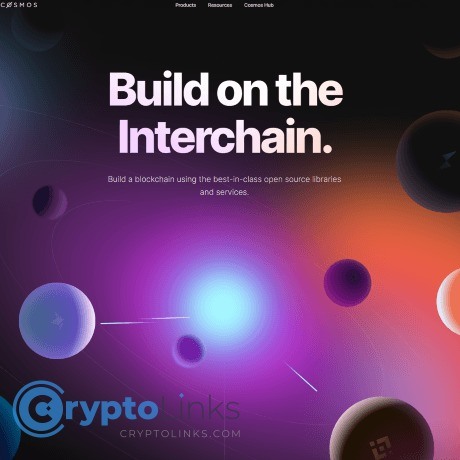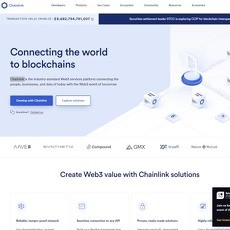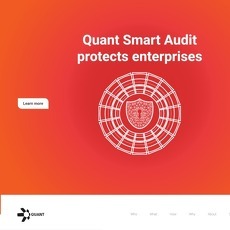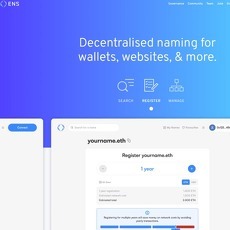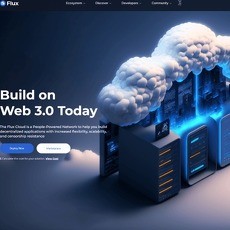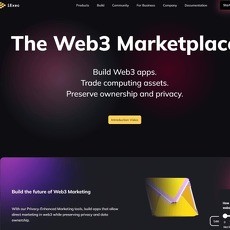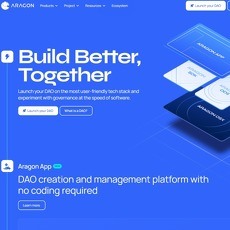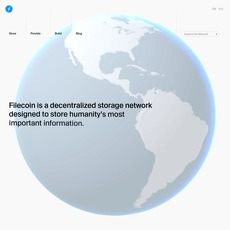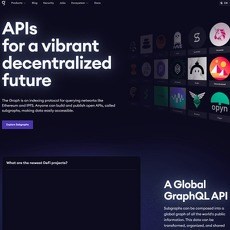Cosmos (ATOM) Review
Cosmos (ATOM)
cosmos.network
Exploring the Cosmos (ATOM) Network Review
As I venture into the captivating world of blockchain technology, the Cosmos (ATOM) Network has always struck me as a marvel of innovation. With its bold vision of creating an "Internet of Blockchains," it caught my attention as a noteworthy pioneer in blockchain interoperability. The path towards becoming the blockchain that unites all blockchains is filled with promise but is a feat of immense technical and conceptual challenge. This article delves deep into the Cosmos Network, its core components, achievements, and the potential it holds in reshaping the blockchain landscape.
The Genesis: Cosmos and ATOM
In the early months of 2019, the blockchain realm witnessed the ascent of Cosmos and its native token, ATOM. Following a meticulously planned mainnet launch, Cosmos swiftly emerged as a hot topic among blockchain enthusiasts. The Cosmos project, although exceptionally ambitious, holds a promise that could potentially orchestrate a paradigm shift in blockchain interoperability.
The inception of the Inter-Blockchain Communication Protocol (IBC) on Cosmos, following a 5-year R&D odyssey, marked a milestone in fulfilling its grand vision. Launched on March 29, 2021, IBC enabled different networks to utilize Cosmos for seamless token and data exchanges.
The Underlying Tech: How Cosmos Solves Blockchain Dilemmas
Tendermint Core
At the heart of the Cosmos Network lies the Tendermint Core, a concoction of the Tendermint BFT algorithm and the IBC protocol. This core drives consensus and ensures smooth communication between the hub and its various zones (connected blockchains).
Application Blockchain Interface (ABCI)
The ABCI is the linchpin that empowers developers to replicate dApps across different programming languages. It bridges the gap between the Tendermint Core and the Cosmos SDK, providing a fertile ground for application development without language constraints.
Cosmos SDK
The Cosmos SDK is the cornerstone that facilitates the creation of blockchains and dApps. It alleviates the development strain by handling the consensus process, letting developers focus on the application layer.
Tackling Blockchain Scalability and Usability
The Cosmos Network's endeavors to address the scalability conundrum, a longstanding issue among leading blockchains, is noteworthy. By promoting the use of the Go programming language and employing a multi-layer structure, Cosmos seeks to enhance both developer flexibility and user accessibility.
The Powerhouses Behind Cosmos
Tendermint and The Interchain Foundation
The collaboration between Tendermint and the Swiss non-profit, The Interchain Foundation (ICF), has fueled the engine driving the Cosmos Network's development. This synergy, marked by the inception of the Cosmos Hub IRISnet, is channeling efforts towards constructing distributed business applications.
A Commendable Ecosystem
The Cosmos ecosystem is bustling with partners, showcasing the network's potent allure. From Binance Chain to Kava, various projects are harnessing Cosmos technology to build on their vision. This resonates with the capability of Cosmos to foster a fertile ground for innovative blockchain endeavors.
ATOM Tokenomics
The narrative of ATOM's inception through an ICO in April 2017, its listing on exchanges, and its price dynamics reflects the anticipatory optimism surrounding Cosmos. The ability of governance proposals to influence the Cosmos framework via Cosmos Hub 3 enhances the token's utility, integrating it further within the network’s fabric.
Marching Towards DeFi: The Gravity DEX
Cosmos's foray into the DeFi space through Gravity DEX showcases its potential in bridging assets across different blockchains. By enabling decentralized trading among a vast array of tokens within and beyond the Cosmos ecosystem, Gravity DEX unveils a new horizon in asset liquidity and interoperability.
Development Landscape and Road Ahead
The substantial activity on Cosmos's GitHub repositories underscores a vibrant development trajectory. With over 86 repositories, the ongoing work on Cosmos's protocol is a testament to its robust development ethos.
The roadmap ahead for Cosmos is laden with potential. As it progresses on its mission, the appeal for blockchain interoperability amplifies. The promise of creating a unified ecosystem of blockchains is a narrative that echoes through the corridors of the blockchain community.
Cosmos is more than just a project; it's a visionary narrative in the blockchain saga. As I meander through the realms of blockchain technology, Cosmos stands as a beacon of innovation with the potential to redefine blockchain interoperability. The journey of Cosmos is a chronicle worth watching, as it carries the essence of a technological renaissance. The days ahead are bound to unveil more facets of Cosmos, painting a broader picture of its impact on the blockchain cosmos.
FAQ About Cosmos and ATOM
- What is Cosmos Network?
Cosmos Network is a decentralized ecosystem of independent blockchains that aims to become the "Internet of Blockchains". It's designed to enable different blockchain networks to communicate and transact with each other in a scalable, interoperable, and secure manner.
- What is the ATOM Token?
ATOM is the native cryptocurrency token of the Cosmos network. It's used for staking, governance, and transaction fees within the Cosmos ecosystem. ATOM holders can also earn rewards by participating in the network's consensus mechanism.
- How Does Cosmos Achieve Blockchain Interoperability?
Cosmos achieves interoperability through its Inter-Blockchain Communication (IBC) Protocol, which facilitates the seamless exchange of data and tokens across different blockchains. Additionally, it employs a modular framework which consists of Tendermint Core, Application Blockchain Interface (ABCI), and Cosmos SDK to ensure smooth operation between the connected blockchains.
- What is the Tendermint Algorithm?
Tendermint is a Byzantine Fault Tolerant (BFT) consensus algorithm that powers the Cosmos Network. It's a Proof-of-Stake (PoS) algorithm that enables fast and secure consensus within the network, even if some nodes act maliciously.
- What are Cosmos Hubs and Zones?
In the Cosmos ecosystem, a Hub is a blockchain that connects various other blockchains (called Zones). Hubs and Zones communicate with each other through the IBC protocol, allowing tokens and data to be transferred securely and seamlessly from one blockchain to another.
- How Can Developers Build on Cosmos?
Developers can build on Cosmos using the Cosmos SDK, which provides a framework to construct decentralized applications and blockchain architectures. Additionally, the Application Blockchain Interface (ABCI) allows developers to code in any programming language, providing a high degree of flexibility.
- What is Gravity DEX?
Gravity DEX is a decentralized exchange (DEX) built on the Cosmos Network. It serves as an Automated Market Maker (AMM) enabling decentralized trading between any two tokens within the Cosmos ecosystem or beyond, thanks to the IBC protocol.
- How Was ATOM Distributed Initially?
The ATOM tokens were distributed through an Initial Coin Offering (ICO) held in April 2017, where Cosmos raised $17.3 million in just 28 minutes by selling 168 million tokens at $0.098 each.
- What is the Governance Mechanism in Cosmos?
Cosmos implements a governance mechanism where ATOM holders can propose and vote on network changes. The upgrade to Cosmos Hub 3 allowed for on-chain governance proposals to be implemented without the need for hard forks, enhancing the community's ability to manage the protocol.
- How Can I Participate in the Cosmos Network?
You can participate by holding ATOM tokens, staking them to earn rewards, voting on governance proposals, or becoming a validator to help secure the network. Additionally, developers can contribute by building dApps and other projects on the Cosmos Network.
- Who Are the Key Entities Behind Cosmos?
The key entities behind Cosmos include the Interchain Foundation (ICF), Tendermint Inc., and the IRIS Foundation. These organizations, along with a broad community of developers and supporters, are working collaboratively to realize the vision of Cosmos.
- How Can I Stay Updated on Cosmos' Development?
You can follow the official Cosmos blog, join their Telegram channel, and follow them on Twitter for the latest updates. Also, checking their GitHub repositories for recent commits can give you a sense of ongoing development activities.
Strengths and weaknesses of Cosmos and ATOM
Cosmos (ATOM) has carved out a niche in the blockchain space with its unique approach to solving interoperability and scalability issues. Below are some strengths and weaknesses associated with Cosmos and its native token, ATOM.
Strengths:
- Interoperability:
- Cosmos enables interoperability among various blockchain networks through its Inter-Blockchain Communication (IBC) protocol, which is a significant step towards creating a connected multi-blockchain ecosystem.
- Scalability:
- With its unique architecture of Hubs and Zones and the Tendermint consensus algorithm, Cosmos can handle a higher transaction throughput compared to many existing blockchain platforms. This scalability makes it a compelling choice for developers and enterprises.
- Modular Framework:
- Cosmos provides a modular framework that allows developers to build custom blockchain applications with ease using the Cosmos SDK. This modularity promotes innovation and flexibility in the ecosystem.
- Sovereignty:
- Blockchains built on Cosmos can retain their sovereignty, meaning they can have their own governance models and aren't required to adhere to a one-size-fits-all approach.
- Strong Community and Developer Support:
- Cosmos has a vibrant community and a strong developer ecosystem. It’s supported by several notable entities like the Interchain Foundation and Tendermint Inc., which contribute to its development and growth.
- Governance:
- ATOM holders have the ability to propose and vote on governance proposals, enabling a level of decentralized decision-making within the network.
Weaknesses:
- Complexity:
- The Cosmos Network’s architecture can be complex for newcomers to understand. This complexity could be a barrier for broader adoption and understanding within the cryptocurrency community.
- Competing Interoperability Solutions:
- There are other projects like Polkadot and Avalanche working on blockchain interoperability solutions. The competition among these platforms could potentially dilute the influence and adoption of Cosmos.
- Smart Contract Support:
- As of my last training cut-off in September 2021, Cosmos has limited support for smart contracts compared to Ethereum or other smart contract platforms. This limitation might deter developers and projects that require robust smart contract capabilities.
- Token Value Concentration:
- A significant amount of ATOM tokens might be concentrated among early investors and the team, which could potentially lead to centralization concerns.
- Security Concerns:
- While the Tendermint consensus is secure, the overall security of the Cosmos network is complex due to the interconnected nature of the Hubs and Zones. A vulnerability in one blockchain could potentially affect others within the network.
- Still in Development:
- Some features and aspects of the Cosmos network are still in development. As with many projects in the blockchain space, there’s a risk associated with the ongoing development and the potential for unanticipated issues to arise.
The Cosmos ecosystem, with its unique approach to blockchain interoperability, presents both exciting possibilities and challenges. Its continued development and the broader adoption of its interoperability solutions will be crucial factors in overcoming the identified weaknesses and realizing its full potential.
Conclusion
The Cosmos Network, with its visionary "Internet of Blockchains" ambition, stands as a transformative force in blockchain interoperability, powered by the robust Tendermint Core, Cosmos SDK, and IBC protocol. Since its 2019 launch, it has fostered a vibrant ecosystem with projects like Gravity DEX and partnerships with Binance Chain and Kava, addressing scalability and usability challenges while empowering developers to build sovereign, interconnected blockchains. Despite hurdles like complexity for newcomers and competition from projects like Polkadot, Cosmos’s modular framework and active community signal a bright future. Ready to explore the interconnected blockchain universe? Visit cosmos.network to dive into its tools, stake ATOM, or build your own dApp. For more cutting-edge crypto reviews and insights, join the Cryptolinks.com community—connect, innovate, and shape the future of blockchain today!

